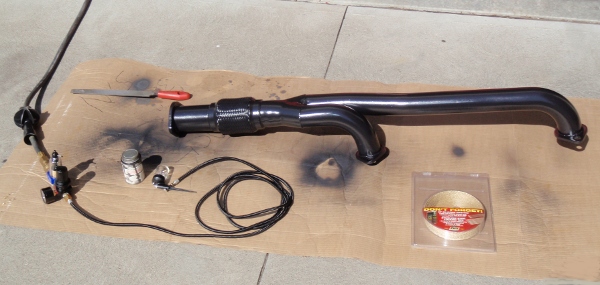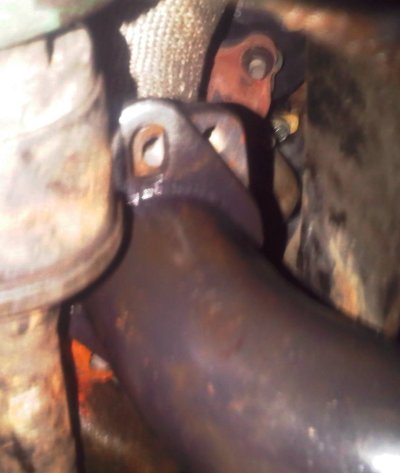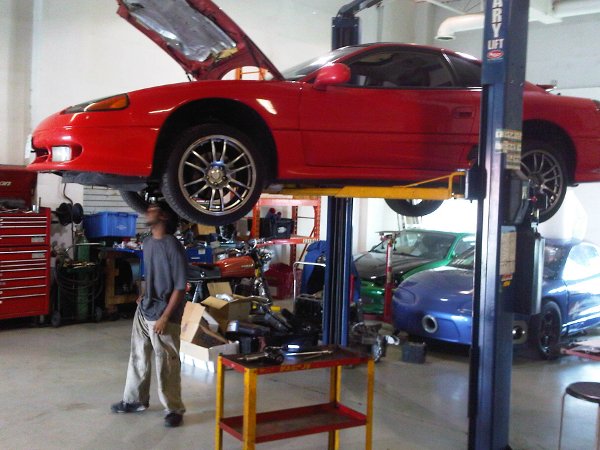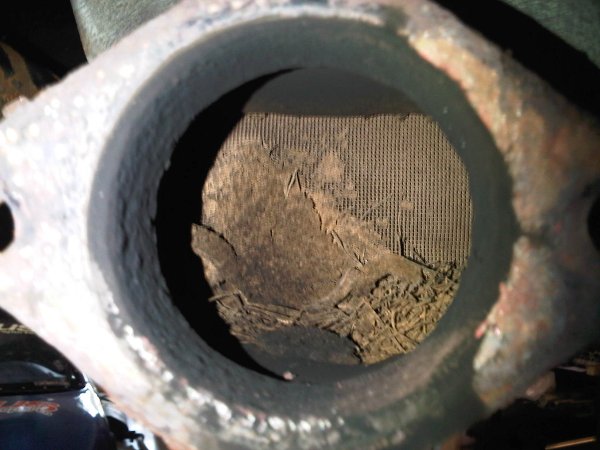IPS Shorty Downpipe
Exhaust systems don't last forever. Modern aluminum-coated and stainless steel exhausts last far longer than the mild steel pipes of yesteryear, but exposure to the weather, salt, and the moisture in the exhaust eventually will rot out the best of exhausts. Mine started ticking and rattling and soon it was clear that old Father Time had eaten my downpipe.

Following my usual idiom, whenever something needs to be fixed, that opens the window for an upgrade, so I started combing the market for a replacement pipe.
If you examine the OEM pipe, the key features are:
- The front pre-cat, a flow restriction and unnecessary with a proper downstream cat;
- A short flex section between the front and rear inlet pipes;
- The rear inlet pipe joining the main pipe at a 90 degree angle;
- A rear flex section;
- A rear hanger mount; and
- Sized to meet the rear cat.
Based on this design, there are a number of improvements that can be made:
- Larger diameter pipe;
- Eliminate the front pre-cat;
- Integrate the flow from the rear turbo via a merge collector, not a 90 degree join; and
- Make it out of 304 or 321 stainless steel.
At the same time though, the other OEM design points - specifically, the flex sections, hanger provision, and the length - should be retained.
With these specifications in place, I went looking for a suitable downpipe. And I found - nothing. Amazingly, none of the major 3S vendors make a pipe that hits all these specs. Some omit the flex sections. Others choose to mount at the back of the front pre-cat. Still others choose to omit all the cats (which is criminal on a street car, if not by law, certainly conceptually). And nobody seems to make use of the OEM hanger point.
Faced with building my own pipe from scratch, I chose instead to go with the closest approximation, which was the IPS "Shorty" pipe. It meets the specs for front pre-cat elimination, flow capacity, and overall length, and omits just one flex section and the hanger provision.
It took a little while to arrive, but when it showed up it was well packaged and came with gaskets.

The welds look good and it uses a decent flex section (cheap flex sections can collapse internally, especially in turbo applications) Plus it really is 304 stainless throughout.
I have a can of Tech Line Coatings "Black Satin" thermal coating (that I used extensively on the Talon race car, and I used on the 13G turbos, plus I have some header wrap from a previous project, so I put those to use. Heat belongs inside the pipe, not in the engine bay or radiated to nearby parts.

And all done and ready to mount.

But, as expected, nothing ever works as designed. The IPS pipe fit the front flange and the cat flange, but the rear turbo flange was quite a bit off. This would simply not fit.

And because this is 304 stainless, fixing the part is not a job for the local muffler shop. So off to Magnus I go.

Marco at Magnus cut off the rear turbo flange, clocked it correctly, and re TIG-welded it back on. We also noticed that the pipe was very close to the crossmember, so we notched the crossmember slightly to gain some clearance.
While the welding was going on, I happened to look into the inlet of the main cat converter, and saw this:

Hrm, that won't flow very well... and it looked like it had been plugged for quite some time. We made 320 HP on the dyno through that!
Happily, all the melted crap popped right out and flow was restored, although I have serious doubts about the health of the cat so replacing it with a new high-flow, 3-way converter is now on the to-do list.
Once bolted up and verified that it wasn't leaking, the following observations were made:
- The tailpipe exhaust note is slightly louder, and there is more audible "turbine woosh" as well. Not obnoxiously (and far quieter than
the leaky downpipe) but still louder than pure OEM;
- Even with the notched crossmember, there is still a little ring under the right circumstances where the pipe is hitting something. Happily,
it is rare, not constant, but it does happen. This is either a consequence of being too close to the crossmember, or perhaps it is the main
system moving around because it is no longer supported ahead of the main cat by the hanger, as the OEM pipe was. I'm going to allow the pipe
to collect witness marks for the time being, and when I change out the cat I'll see where the problem is and take steps to fix it; and
- Although not verified with the dyno, it seems clear that the car is making more power, and fuel mileage appears to have improved.
Next step will be to verify that the AEM tune is still OK and verify the boost control settings, as it is possible that the downstream flow improvements will change the fuel map and/or the wastegate duty maps.
But in the meantime, at least the car no longer sounds like an old tractor.
As far as a rating would go, I rate the IPS Shorty Downpipe a 6/10. It gets good marks for materials, weld quality, and for meeting the specs that it does. It gets docked points for omitting the lead flex section, the hanger provision, and for not fitting without modification.
